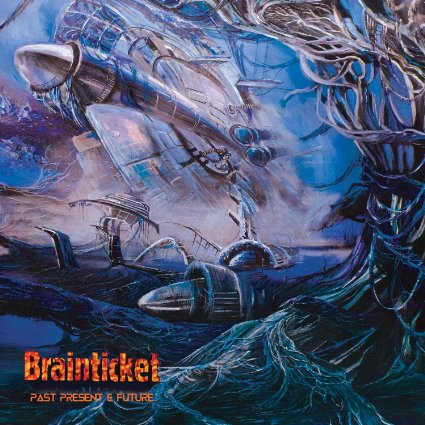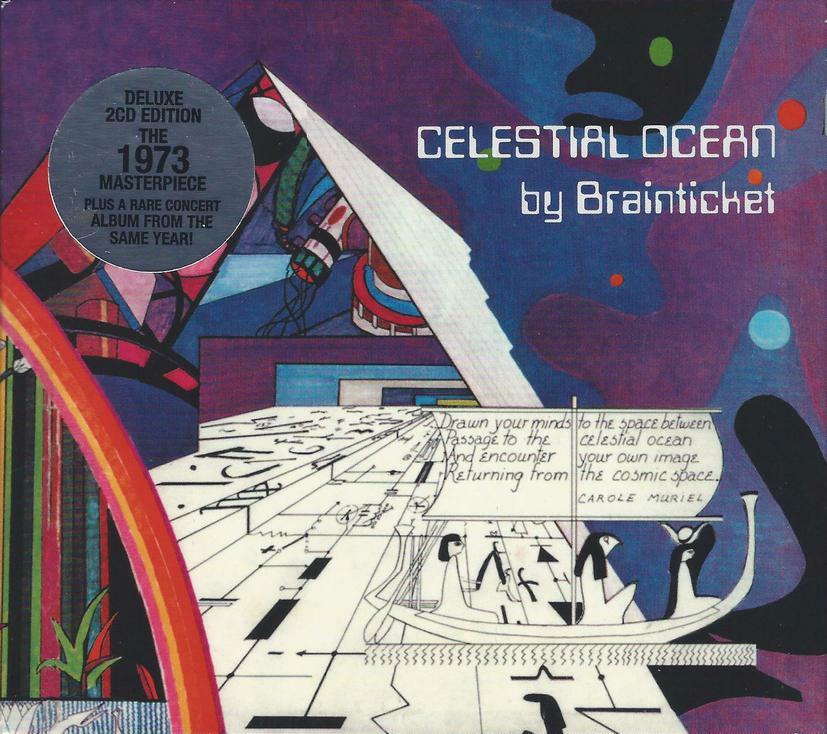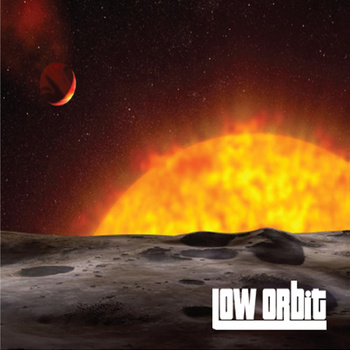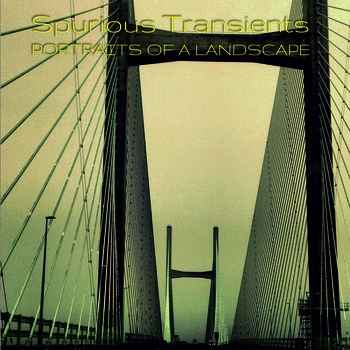“Joseph Benzola views his music as being Psychedelic. He’s well aware that it’s nowhere near to being acid rock, but he does feel strongly that the music is mind expanding. With a background that runs from the Beatles through the most innovative of Jazz masters like Sun Ra, Coltrane, and Miles, and on to rock iconoclasts like Beefheart and Zappa, Benzola synthesizes his influences to produce music that rarely sounds identifiably like any of them… even when he is paying tribute to them.”
That was the opening paragraph to the review article and interview with percussionist/pianist/improviser/composer Joseph Benzola I published in Aural Innovations #9 back in January 2000 (when still a printed zine!). It’s a detailed interview that provides excellent insight into Benzola’s music and is a recommended read (See the link at the end of this review). I’ve not written about Benzola’s music since 2003’s Winter in America, so it was a pleasure to immerse myself in these two albums: 2010’s The Mystery Of Twilight, and Collected Works: 2012-2014, released late last year, and both jam packed with over 100 minutes of music.
 The Mystery Of Twilight includes 25 tracks, with about half being collaborations with various musicians and the rest Benzola solo pieces. Benzola plays drums, acoustic and electronic percussion, electronics, piano, flute, shenai, keyboards, prepared piano, saw blades, copper tubes, aluminum sheet and metal pail.
The Mystery Of Twilight includes 25 tracks, with about half being collaborations with various musicians and the rest Benzola solo pieces. Benzola plays drums, acoustic and electronic percussion, electronics, piano, flute, shenai, keyboards, prepared piano, saw blades, copper tubes, aluminum sheet and metal pail.
Dan Stearns contributes guitar, bass and electronics to three tracks. Forces in Motion is an interesting contrast between Funk, electronica, and often acid-fried Frippoid guitar licks, with the electronics getting increasingly frantic and the atmospherics more assertive as the piece progresses. Furred Antennae is similar, and I like the seemingly chaotic though measured percussive clatter as Stearns rips off his screaming licks. Frenetic piano and clangoring percussion take the lead on Music for Prepared Piano and Electronics, as a flurry of electronic bits and pieces zip about. Benjamin Smith contributes electric piano to Metamorphosis, which starts off with a merry blend of African and Caribbean influences, but soon shifts to a moody, ambient Jazz vibe, with ethereal electric piano accompanied by energetic Free-Jazz drumming, and the overall vibe varying in levels of darkness, intensity, and even a sense of doom. Kaden Harris contributes “dark ambient music” to Prism, which aptly describes the mood of the piece, and Benzola’s lyrical drumming injects to an ever developing sense of dark intensity and cinematic surrealism, as if they were creating the soundtrack to some kind of Psychedelic horror film for the Jazz and Space-Ambient set. For Lhasa, James Ross provides processed and tuned Tibetan Bowls and Greg Hooper contributes… get this… processed Jack Hammer. Yeah, raised my eyebrows too. But it works perfectly. The foundation of the piece is hypnotic ambience, augmented by the Bowls and Jack Hammer blasts, which are swept along by robotically methodical percussion. Nells Bells is like an ambient Jazz rocking King Crimson, with the father and son team of John and Jonathan Asta on guitars and drum loops, and Brion Gysin voice samples scattered throughout. The drumming Asta also contributes to Two in One, a frenzied, drum dominated Free-Jazz workout that in parts recalls the spirit of Coltrane at his most adventurous and kept me edge-of-my-seat spellbound for its entire 10 minutes. Lee Noyes takes the drum seat on Ridgepole Crowned, which features a Jazz piano and drumming duet that is beautifully serene, but also communicates a sort of avant-garde Gershwin theme. The Golden Triangle is an interesting piece, with John Balaban providing Ca Dao recordings of Vietnamese Folk Poems which he taped in the field from 1971-1972, the recordings played to a backdrop of Jazz drumming, percussion and sundry sounds.
Voice samples are the collaborators on two of the tracks. The Mushroom Velada includes the voices of John Cage and mushroom shaman Maria Sabina. I had to Google Sabina, who I learned was a Mazatec healer, curandera, and shaman from Oaxaca, Mexico, who is known for introducing the sacred mushroom ceremony velada to the world. She passed away in 1985 at the age of 91. If you read the interview with Benzola I link to below you’ll understand his interest in mushrooms. Anyway, it’s a short piece that features a whimsically presented and jauntily grooving array of electronics and percussion, with Sabina chanting, followed by a Cage discourse. And Patti & Lenni Crash the Stage at an Electro Senegalese Bar in the Bronx features the voice of Patti Smith reciting a poem called Brian Jones, and the guitar of Lenny Kaye, taken from a recording made in NYC in 1973.
The majority of the Benzola solo pieces are short, ranging from less than a minute to around 3 minutes. We’ve got a variety of solo piano workouts and African/Carribean influenced percussion/piano/electronic experiments. I like the spacey Jazz vibe of For Pharoah. MU is a brisk percussion and flute Jazz duet with both Indian and African influences. Portraits of the Dead-Derek Bailey features quirkily metered electronics and percussion, sounding like every game at an old time carnival thrown together and electronically treated. Of the two lengthier solo pieces, Khalid’s Journey to the Alabaster Horizon is one of my favorites of the set, consisting of monstrous jamming 60s styled Free-Jazz and ethnic percussion, with killer keyboard squalls that are like a blend of Sun Ra and Mike Ratledge. And Nausea is like an Industrial music and electronica conspiracy to create a noisily edgy adventure-in-sound dirge, with a female robot voice reciting a Dadaist narrative throughout.
 As the title indicates, Collected Works: 2012-2014 brings us up to date on Benzola’s work from the past couple years. Several of the tracks are reflective solo piano pieces that would be just as much at home in a smoky lounge as a symphony stage (or your living room for that matter). These pieces are a joy, as Benzola is an accomplished and expressive ivory tickler. My hands down favorite of these is Satellite on a Pyramid, the title of which screams out Sun Ra, but is an impassioned composition that blends the free-wheeling spirit of Jazz with the thematic arc of Broadway, and adds a warm and adventurous dissonance.
As the title indicates, Collected Works: 2012-2014 brings us up to date on Benzola’s work from the past couple years. Several of the tracks are reflective solo piano pieces that would be just as much at home in a smoky lounge as a symphony stage (or your living room for that matter). These pieces are a joy, as Benzola is an accomplished and expressive ivory tickler. My hands down favorite of these is Satellite on a Pyramid, the title of which screams out Sun Ra, but is an impassioned composition that blends the free-wheeling spirit of Jazz with the thematic arc of Broadway, and adds a warm and adventurous dissonance.
We’ve also got several pieces that bring the Jazz and electronic worlds together. Asphodel features cosmic Jazz á la Sun Ra, with melodic tinkling keys that bear only the slightest hint of welcome dissonance, backed by steady drumming and light atmospherics. In Memoriam-For Ian Catchart starts off with a similar vibe, but is less playful and more ambient and introspective, though soon develops into a duet between Jazz drumming and a mischievous array of spaced out sounds. Angel of Light/Fallen Angel-For Kenneth Anger could just as easily been titled Meditation for Pinball Machine and Soundscape, with its rhythmically precise game room clatter and gradually building aura of pulsating, cavernous atmospherics. (Guest Chris Becker provides the “dark ambient music” on Angel of Light.) Jazz drumming and spaced out experimental electronics converge on Key Zero, with guest Jukka-Pekka Kervinen providing the electronics. The electronics are at times playful, hypnotic, orchestral and ominous on Portraits of the Dead-Karlheinz Stockhausen, and includes a voice narrative (of Stockhausen?) discussing the nature of sound. The spirit of its subject lives on Portraits of the Dead-Josef Zawinul, a cool grooving, rocking, and just a wee bit ethnic infused 70s styled Jazz-Fusion jam with a Psychedelic edge. The keys/drums combo on this track are exhilarating. Portraits of the Dead-Paul Motian and Steve McCall and Portraits of the Dead-Angus Maclise are both busily spirited and imaginative solo drum and percussion workouts.
Visual imagery provides the inspiration for five of the tracks. The cover Art of the album, by Russell Floersch and titled Electra, inspired the piece of the same name, a funky rocking slab of 70s styled Herbie Hancock Jazz-Fusion with a healthy dose of droning soundscape waves and freaky electronica. Two tracks are based on the photos of Lauren Matzen, both black and white images of a woodland scene that’s either in decay or just hibernating for the Winter. The Dreaming Tree is a high energy drum and percussion workout with the looming presence of electronic insects. The sounds of the forest are even more prominent via field recordings on Not There, with piano, strings and percussion music that reminds me of Sun Ra’s Music From The World Tomorrow. We also have two tracks based on the photos of Diane DiGioia, one of which looks like a sparse and grainy canvas, and the other a blue, partly cloudy sky, with an urban setting partly revealed to the left and right. The Persistence of Memory is a Jazz drum and effects workout, with a great channel separation mix as I listen under the headphones. And Peace Piece is a lulling and beautifully melodic solo piano tune.
In summary, Benzola inhabits several worlds – Jazz, Classical, Electronica, Kosmiche, Experimental – and synthesizes his influences to create absorbing, exciting, inventive and, yes, Psychedelic concoctions. WIRE should have done a cover story on this guy long ago.
To stream and download visit the Joseph Benzola Bandcamp site at: http://josephbenzola.bandcamp.com
I highly recommdned CLICKING HERE to read the review article and interview I conducted with Benzola back in 2000.
Reviewed by Jerry Kranitz
 It’s been 15 years since the last new Brainticket album – Alchemic Universe, released in 2000. Fast forward to 2011 and Brainticket founder and ship commander Joel Vandroogenbroeck teamed up with members of Farflung and Pressurehed, plus Abby Travis on vocals to join the Cleopatra Records sponsored Space Rock Invasion tour that brought Brainticket, Nektar and a solo acoustic Huw Lloyd-Langton to the U.S. I caught the tour in Cleveland I am not exaggerating when I say that Joel and company put on one of the best live performances I have ever seen (CLICK HERE for some YouTube videos). I also had the opportunity to interview Joel, who indicated that he was hoping all the activity and visibility would result in an album of new material.
It’s been 15 years since the last new Brainticket album – Alchemic Universe, released in 2000. Fast forward to 2011 and Brainticket founder and ship commander Joel Vandroogenbroeck teamed up with members of Farflung and Pressurehed, plus Abby Travis on vocals to join the Cleopatra Records sponsored Space Rock Invasion tour that brought Brainticket, Nektar and a solo acoustic Huw Lloyd-Langton to the U.S. I caught the tour in Cleveland I am not exaggerating when I say that Joel and company put on one of the best live performances I have ever seen (CLICK HERE for some YouTube videos). I also had the opportunity to interview Joel, who indicated that he was hoping all the activity and visibility would result in an album of new material.
 The first three Brainticket albums – Cottonwoodhill (1971), Psychonaut (1972), and Celestial Ocean (1973) – are classics of early 70s experimental Progressive/Psychedelic/Kosmiche music. Headed up by Joel Vandroogenbroeck, a Belgian based in Switzerland, Brainticket have sometimes been lumped in with the Krautrock bands. Though this is incorrect from a nationality standpoint, Brainticket did share in common with the pioneering Germans of the era a distinctive identity, creating music that was simultaneously experimental and accessible… introspective and transcendent.
The first three Brainticket albums – Cottonwoodhill (1971), Psychonaut (1972), and Celestial Ocean (1973) – are classics of early 70s experimental Progressive/Psychedelic/Kosmiche music. Headed up by Joel Vandroogenbroeck, a Belgian based in Switzerland, Brainticket have sometimes been lumped in with the Krautrock bands. Though this is incorrect from a nationality standpoint, Brainticket did share in common with the pioneering Germans of the era a distinctive identity, creating music that was simultaneously experimental and accessible… introspective and transcendent. Colour Haze are a long lived German guitar/bass/drums trio headed up by guitarist/vocalist Stefan Koglek, who also runs the excellent Elektrohasch Records label. Koglek’s guitar is THE sound of Colour Haze. It has a distinctive feel that is hard rocking grungy stoned and bubbly Psychedelic, yet is always beautifully and lyrically melodic. Koglek also sings, but when Colour Haze are jamming it’s the guitar that is typically making the SONG.
Colour Haze are a long lived German guitar/bass/drums trio headed up by guitarist/vocalist Stefan Koglek, who also runs the excellent Elektrohasch Records label. Koglek’s guitar is THE sound of Colour Haze. It has a distinctive feel that is hard rocking grungy stoned and bubbly Psychedelic, yet is always beautifully and lyrically melodic. Koglek also sings, but when Colour Haze are jamming it’s the guitar that is typically making the SONG. Low Orbit are the Toronto, Canada based Stoner-Space-Psych trio of Angelo Catanero on guitar and vocals, Joe Grgic on bass and synth, and Emilio Mammone on drums.
Low Orbit are the Toronto, Canada based Stoner-Space-Psych trio of Angelo Catanero on guitar and vocals, Joe Grgic on bass and synth, and Emilio Mammone on drums. Spurious Transients is headed up by Welsh multi-instrumentalist Gavin Lloyd Wilson who is heavily influenced by German pioneers such as Neu!, Faust, Can, Cluster, Harmonia and Kraftwerk. Wilson plays guitar, bass, synthesizers, samples and field recordings, with help from guests on various tracks. (Wilson also did time standing in on bass for Sendelica during some live performances.)
Spurious Transients is headed up by Welsh multi-instrumentalist Gavin Lloyd Wilson who is heavily influenced by German pioneers such as Neu!, Faust, Can, Cluster, Harmonia and Kraftwerk. Wilson plays guitar, bass, synthesizers, samples and field recordings, with help from guests on various tracks. (Wilson also did time standing in on bass for Sendelica during some live performances.) Life Giving is ambient-electronic space musician Dan Pound’s second release of 2014 and the follow up to Eros Thanatos. Pound includes some thoughts about the new album on his web site, but I think the opening line of his notes sums it up nicely: “Sublime, nocturnal space music“.
Life Giving is ambient-electronic space musician Dan Pound’s second release of 2014 and the follow up to Eros Thanatos. Pound includes some thoughts about the new album on his web site, but I think the opening line of his notes sums it up nicely: “Sublime, nocturnal space music“. The Mystery Of Twilight includes 25 tracks, with about half being collaborations with various musicians and the rest Benzola solo pieces. Benzola plays drums, acoustic and electronic percussion, electronics, piano, flute, shenai, keyboards, prepared piano, saw blades, copper tubes, aluminum sheet and metal pail.
The Mystery Of Twilight includes 25 tracks, with about half being collaborations with various musicians and the rest Benzola solo pieces. Benzola plays drums, acoustic and electronic percussion, electronics, piano, flute, shenai, keyboards, prepared piano, saw blades, copper tubes, aluminum sheet and metal pail. As the title indicates, Collected Works: 2012-2014 brings us up to date on Benzola’s work from the past couple years. Several of the tracks are reflective solo piano pieces that would be just as much at home in a smoky lounge as a symphony stage (or your living room for that matter). These pieces are a joy, as Benzola is an accomplished and expressive ivory tickler. My hands down favorite of these is Satellite on a Pyramid, the title of which screams out Sun Ra, but is an impassioned composition that blends the free-wheeling spirit of Jazz with the thematic arc of Broadway, and adds a warm and adventurous dissonance.
As the title indicates, Collected Works: 2012-2014 brings us up to date on Benzola’s work from the past couple years. Several of the tracks are reflective solo piano pieces that would be just as much at home in a smoky lounge as a symphony stage (or your living room for that matter). These pieces are a joy, as Benzola is an accomplished and expressive ivory tickler. My hands down favorite of these is Satellite on a Pyramid, the title of which screams out Sun Ra, but is an impassioned composition that blends the free-wheeling spirit of Jazz with the thematic arc of Broadway, and adds a warm and adventurous dissonance. Hot on the heels of their Now Not Then reunion comes the follow up album: Paleolithic. Walls of Genius (WOG) were active from 1982-86, releasing oodles of cassette albums and marking out their own unique spot on the Post-Punk homemade music/cassette culture era. Recorded in Spring 2014, Now Not Then consisted of the first WOG reunion of Ed Fowler, Evan Cantor and Little Fyodor since 1986, and Paleolithic is the love child of a subsequent session recorded this past November.
Hot on the heels of their Now Not Then reunion comes the follow up album: Paleolithic. Walls of Genius (WOG) were active from 1982-86, releasing oodles of cassette albums and marking out their own unique spot on the Post-Punk homemade music/cassette culture era. Recorded in Spring 2014, Now Not Then consisted of the first WOG reunion of Ed Fowler, Evan Cantor and Little Fyodor since 1986, and Paleolithic is the love child of a subsequent session recorded this past November. It took nearly four years but Cranium Pie have finally released the follow up to 2011’s fantastic Mechanisms Part 1. Mechanisms Part 2 is a 2-LP set with a single approximately 19 minute track on each side. Though untitled, each side has distinguishable segments, though they typically flow fairly seamlessly from one to the next. But titles mean little here as the whole is like a tour de force of Prog-Psych-Kosmiche Rock circa 1969-73. Follow along as I stream of conscious describe this 4 sided experience and you’ll get a flavor for what Mechanisms Part 2 is about…
It took nearly four years but Cranium Pie have finally released the follow up to 2011’s fantastic Mechanisms Part 1. Mechanisms Part 2 is a 2-LP set with a single approximately 19 minute track on each side. Though untitled, each side has distinguishable segments, though they typically flow fairly seamlessly from one to the next. But titles mean little here as the whole is like a tour de force of Prog-Psych-Kosmiche Rock circa 1969-73. Follow along as I stream of conscious describe this 4 sided experience and you’ll get a flavor for what Mechanisms Part 2 is about… Though Lee Negin has been recording since the early 80s, he was a new discovery for me in 2014, starting with the tongue-in-cheek sci-fi “Technopera” Cheeze Chronicles, followed by the electronic freakiness and cerebral mind massage of Groundless. Kicking off the new year, Negin has released Terminus, a 20+ minute EP described as a collection of 4 extended dreamscapes. The soundtrack for the 5D movie that “…takes place in the space between your ears.”
Though Lee Negin has been recording since the early 80s, he was a new discovery for me in 2014, starting with the tongue-in-cheek sci-fi “Technopera” Cheeze Chronicles, followed by the electronic freakiness and cerebral mind massage of Groundless. Kicking off the new year, Negin has released Terminus, a 20+ minute EP described as a collection of 4 extended dreamscapes. The soundtrack for the 5D movie that “…takes place in the space between your ears.”